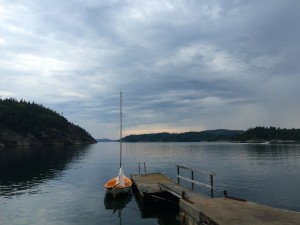
Once each year the historic hydrographic station on Bornö sets the stage for the NBI/UH summer school on ocean physics. Bornö, a small rock island with dense vegetation, is beautifully located close to the head of the 25km long Gullmar Fjord on the west coast of Sweden, a couple of hours by car to the north of Göteborg. This year’s topic was ocean small-scale turbulence, and besides the delegation from Centre for Ice and Climate, PhD students, postdocs and faculty from University of Hamburg (UH) and Leibniz Institute of Baltic Sea Research Warnemünde (IOW) participated as well.
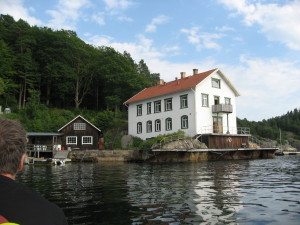
Gullmar fjord has previously been subject to an intense study of its pronounced seiche motion, a standing wave in a closed or semi-closed basin, and the effect of this phenomenon on the turbulent mixing of the dense deep- and bottom water, which is stagnant during the summer months of the year. In perfect alignment with this year’s topic, existing literature on the fjord dynamics was presented during the morning sessions by the PhD students. These presentations was followed by lectures on the fundamentals of ocean small-scale turbulence and fjord physics.
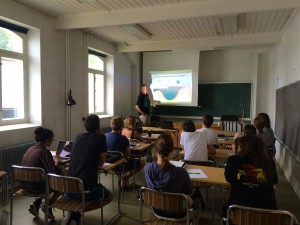
The lectures and presentations were accompanied with measurement sessions carried out during the afternoons. Various instruments were lowered from the hanging bridge at the hydrographic station to examine the properties of the water column. Of greatest interest was the microstructure profiler, brought by Lars Umlauf from IOW, which measures small-scale variations in the velocity shear that can be used to infer dissipation rates, a measure of the degree of turbulence. No less than 200 microstructure profiles were obtained during the week and provided a glimpse into the evolution of the fjord during the summer school.
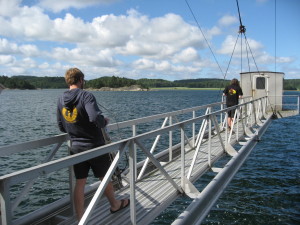
One special member of the school cannot go unmentioned, the one-masted boat “Väderöjulle”. In the late hours of the afternoon when reflection had to be made upon the turbulent thoughts that developed during the day, she provided an excellent opportunity to get a better view on the fjord and learn how to sail.
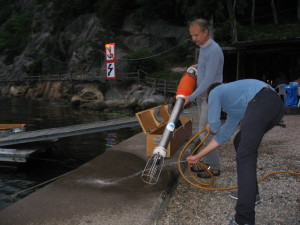
Please see Søren’s website (http://www.gfy.ku.dk/~hpn661/) for further information on past and the present summer school at Bornö, as well as additional photographs and results from our measurement campaign.
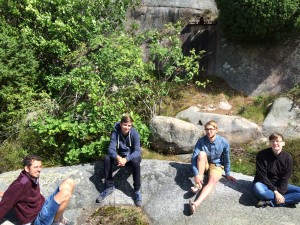
written by Mads Bruun Poulsen and Søren Borg Nielsen